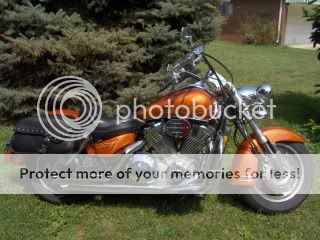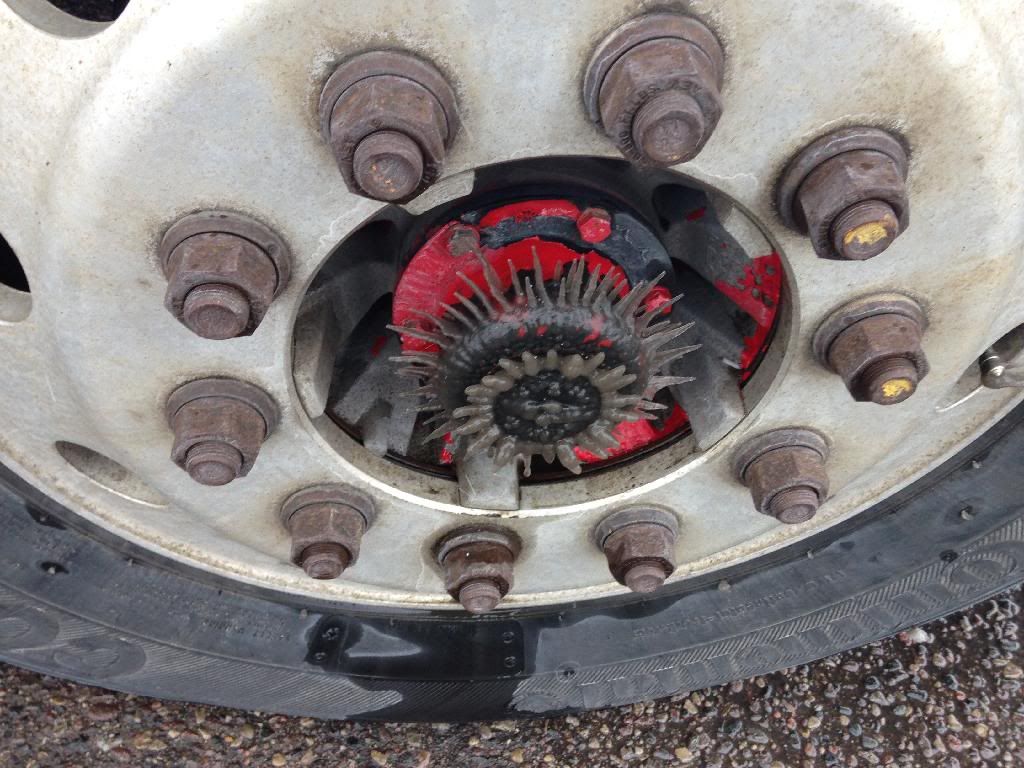Shifting Questions....
Topic 2515 | Page 1

Sounds like ya understand it. Yup, double clutching is taught because that's how you have to do it for the DOT test. Even though most drivers switch to floating gears (no clutch) as soon as they get with their first trainer.
Biggest change for you coming from driving a manual in a car is yo don't press the clutch in very far at all, just an inch or two. Unless of course your stopping then you push it all the way in. The transmission in trucks is not synchronized which is why you don't press the clutch all the way in, and probably the reason for the double clutch. Maybe someone more knowledgable than I can way I on that.
Floating Gears:
An expression used to describe someone who is shifting gears without using the clutch at all. Drivers are taught to "Double Clutch" or press and release the clutch twice for each gear shift. If you're floating gears it means you're simply shifting without using the clutch at all.
DOT:
Department Of Transportation
A department of the federal executive branch responsible for the national highways and for railroad and airline safety. It also manages Amtrak, the national railroad system, and the Coast Guard.
State and Federal DOT Officers are responsible for commercial vehicle enforcement. "The truck police" you could call them.
Double Clutch:
To engage and then disengage the clutch twice for every gear change.
When double clutching you will push in the clutch, take the gearshift out of gear, release the clutch, press the clutch in again, shift the gearshift into the next gear, then release the clutch.
This is done on standard transmissions which do not have synchronizers in them, like those found in almost all Class A trucks.
Double Clutching:
To engage and then disengage the clutch twice for every gear change.
When double clutching you will push in the clutch, take the gearshift out of gear, release the clutch, press the clutch in again, shift the gearshift into the next gear, then release the clutch.
This is done on standard transmissions which do not have synchronizers in them, like those found in almost all Class A trucks.

There is a system called a clutch brake that activates when you fully depress the clutch in a rig. It's purpose is to stop the rotation of the input shaft assembly so that the driver can smoothly shift the truck into either first or reverse. Fully depressing the clutch while shifting a rig can wreak some nasty havoc on that clutch brake.
Hope that helps answer your question!

Just remember, when you are shifting up, say out loud " Making Money" normally it is pretty much spot on for the right amount of time to change of gears. Most trucks have a shifting RPM of 1400-1500 RPM's so saying that is spot on with the RPM drop required to get into the next gear. Which is normally around 1100 RPM's. and for down shifting 1000-1100 is normally where you start the down shifting process, the "Making Money" still works and you just rev it enough to bring the RPM's to 1500. Don't worry about learning how to Float gears because the dmv road test will watch you. and will automatically fail you. But as stated before by time you get with a trainer you'll be taught how to float ESPECIALLY if he is a lease purchase of a owner Op. saves the clutches if it's done properly.
If I ever have to do a dmv road test chances are I am almost 100% sure I'll fail it right away. Been floating all of my career after the first month driving. Now in my brain it's embedded "Clutch is for stopping completely and starting from a complete stop" Lol Good luck bud be safe.
Float Gears:
An expression used to describe someone who is shifting gears without using the clutch at all. Drivers are taught to "Double Clutch" or press and release the clutch twice for each gear shift. If you're floating gears it means you're simply shifting without using the clutch at all.
Dm:
Dispatcher, Fleet Manager, Driver Manager
The primary person a driver communicates with at his/her company. A dispatcher can play many roles, depending on the company's structure. Dispatchers may assign freight, file requests for home time, relay messages between the driver and management, inform customer service of any delays, change appointment times, and report information to the load planners.DMV:
Department of Motor Vehicles, Bureau of Motor Vehicles
The state agency that handles everything related to your driver's licences, including testing, issuance, transfers, and revocation.

I was taught you don't fully depress the clutch after 1st (or into reverse) but you still press down on it slightly for an electrical switch. I'm not a mechanic (can you tell?) but a quick double clutch isn't nearly as bad as it sounds. Adding what John S. said to my knowledge reinforces it. I don't float much unless the road is icy and I don't want to risk a torque jump but that would be poor shifting anyway. Float or don't, it doesn't really matter but a "real" up or down shift is just pressing down on the clutch a little bit anyway. When the truck is off you can almost hear/feel the spring stop just before you hit clutch "wall" and have to really press down hard.
Now traffic in a major city? That's a different story haha.
Double Clutch:
To engage and then disengage the clutch twice for every gear change.
When double clutching you will push in the clutch, take the gearshift out of gear, release the clutch, press the clutch in again, shift the gearshift into the next gear, then release the clutch.
This is done on standard transmissions which do not have synchronizers in them, like those found in almost all Class A trucks.

I was taught you don't fully depress the clutch after 1st (or into reverse) but you still press down on it slightly for an electrical switch. I'm not a mechanic (can you tell?) but a quick double clutch isn't nearly as bad as it sounds. Adding what John S. said to my knowledge reinforces it. I don't float much unless the road is icy and I don't want to risk a torque jump but that would be poor shifting anyway. Float or don't, it doesn't really matter but a "real" up or down shift is just pressing down on the clutch a little bit anyway. When the truck is off you can almost hear/feel the spring stop just before you hit clutch "wall" and have to really press down hard.
Now traffic in a major city? That's a different story haha.
bro, When they shut down the NY turkpike last year cause there was like 5 fatal car accidents along a big stretch 7 hours of depressing the clutch then stop. I was in a brand new KW t660 and I float so the clutch was still very new and a pain to push down lol. i hated having a manual that day haha, got detoured to US20 in upstate new off the turnpike. Some of the best scenery i have ever seen.
Double Clutch:
To engage and then disengage the clutch twice for every gear change.
When double clutching you will push in the clutch, take the gearshift out of gear, release the clutch, press the clutch in again, shift the gearshift into the next gear, then release the clutch.
This is done on standard transmissions which do not have synchronizers in them, like those found in almost all Class A trucks.

Everyone hates using the clutch in heavy traffic. I personally use low gear and idle. If you do it right you will not have to use the clutch very much at all. Double clutching is only for the benefit of DMV. As soon as i got my CDL my trainer taught me how to float and i have never gone back. If i had to do another road test i would probably fail out of the gate or have the tractor bounce like crazy because i can't use the clutch worth diddly.
CDL:
Commercial Driver's License (CDL)
A CDL is required to drive any of the following vehicles:
- Any combination of vehicles with a gross combined weight rating (GCWR) of 26,001 or more pounds, providing the gross vehicle weight rating (GVWR) of the vehicle being towed is in excess of 10,000 pounds.
- Any single vehicle with a GVWR of 26,001 or more pounds, or any such vehicle towing another not in excess of 10,000 pounds.
- Any vehicle, regardless of size, designed to transport 16 or more persons, including the driver.
- Any vehicle required by federal regulations to be placarded while transporting hazardous materials.
Double Clutch:
To engage and then disengage the clutch twice for every gear change.
When double clutching you will push in the clutch, take the gearshift out of gear, release the clutch, press the clutch in again, shift the gearshift into the next gear, then release the clutch.
This is done on standard transmissions which do not have synchronizers in them, like those found in almost all Class A trucks.
Double Clutching:
To engage and then disengage the clutch twice for every gear change.
When double clutching you will push in the clutch, take the gearshift out of gear, release the clutch, press the clutch in again, shift the gearshift into the next gear, then release the clutch.
This is done on standard transmissions which do not have synchronizers in them, like those found in almost all Class A trucks.
Dm:
Dispatcher, Fleet Manager, Driver Manager
The primary person a driver communicates with at his/her company. A dispatcher can play many roles, depending on the company's structure. Dispatchers may assign freight, file requests for home time, relay messages between the driver and management, inform customer service of any delays, change appointment times, and report information to the load planners.DMV:
Department of Motor Vehicles, Bureau of Motor Vehicles
The state agency that handles everything related to your driver's licences, including testing, issuance, transfers, and revocation.

Thanks,
More things to learn. I am thinking I may need to carry a video camera to school and video myself trying to shift. That way I will be able to post on on youtube. It will go viral at people laughing at me. At least I will make some money with the video!

They would laugh at some people in my class too, including me, I hate double clutching. and I'm not good at it. Oh well.
Double Clutch:
To engage and then disengage the clutch twice for every gear change.
When double clutching you will push in the clutch, take the gearshift out of gear, release the clutch, press the clutch in again, shift the gearshift into the next gear, then release the clutch.
This is done on standard transmissions which do not have synchronizers in them, like those found in almost all Class A trucks.
Double Clutching:
To engage and then disengage the clutch twice for every gear change.
When double clutching you will push in the clutch, take the gearshift out of gear, release the clutch, press the clutch in again, shift the gearshift into the next gear, then release the clutch.
This is done on standard transmissions which do not have synchronizers in them, like those found in almost all Class A trucks.

I usually try to wait until I'm done for the day and in the shower room at a truck stop. I'm not much for tcob public bathrooms. ;)
New Reply:
New! Check out our help videos for a better understanding of our forum features

















Preview:








 TT On Facebook
TT On Facebook
Ok I have been reading the shifting procedures. After talking to a trucker friend, I am a bit confused. The procedures state to downshift, you have to press the clutch in and then go into neutral. Increase the RPM until it is high enough for the gear. Press clutch and go in gear. Same thing for upshifting except you have to let the RPM slow before pressing the clutch and then go into gear. My friend stated, he did not know why they teach double clutching anymore (except that it is required by DMV). He said most of the time you don't need to press in the clutch to changes gears. Is this true? I think it is going to be hard to learn to shift correctly coming from a manual 4 wheeler.
I guess I am confused by what he said. I am also confused as to why you have to push the clutch in and go into neutral. Why do you have to release the clutch in neutral? Why not press the clutch, move to neutral and then rev and go into gear you need? I am sure there is a reason you have to release the clutch in between so ..... Why?
Double Clutch:
To engage and then disengage the clutch twice for every gear change.
When double clutching you will push in the clutch, take the gearshift out of gear, release the clutch, press the clutch in again, shift the gearshift into the next gear, then release the clutch.
This is done on standard transmissions which do not have synchronizers in them, like those found in almost all Class A trucks.
Double Clutching:
To engage and then disengage the clutch twice for every gear change.
When double clutching you will push in the clutch, take the gearshift out of gear, release the clutch, press the clutch in again, shift the gearshift into the next gear, then release the clutch.
This is done on standard transmissions which do not have synchronizers in them, like those found in almost all Class A trucks.
Dm:
Dispatcher, Fleet Manager, Driver Manager
The primary person a driver communicates with at his/her company. A dispatcher can play many roles, depending on the company's structure. Dispatchers may assign freight, file requests for home time, relay messages between the driver and management, inform customer service of any delays, change appointment times, and report information to the load planners.DMV:
Department of Motor Vehicles, Bureau of Motor Vehicles
The state agency that handles everything related to your driver's licences, including testing, issuance, transfers, and revocation.